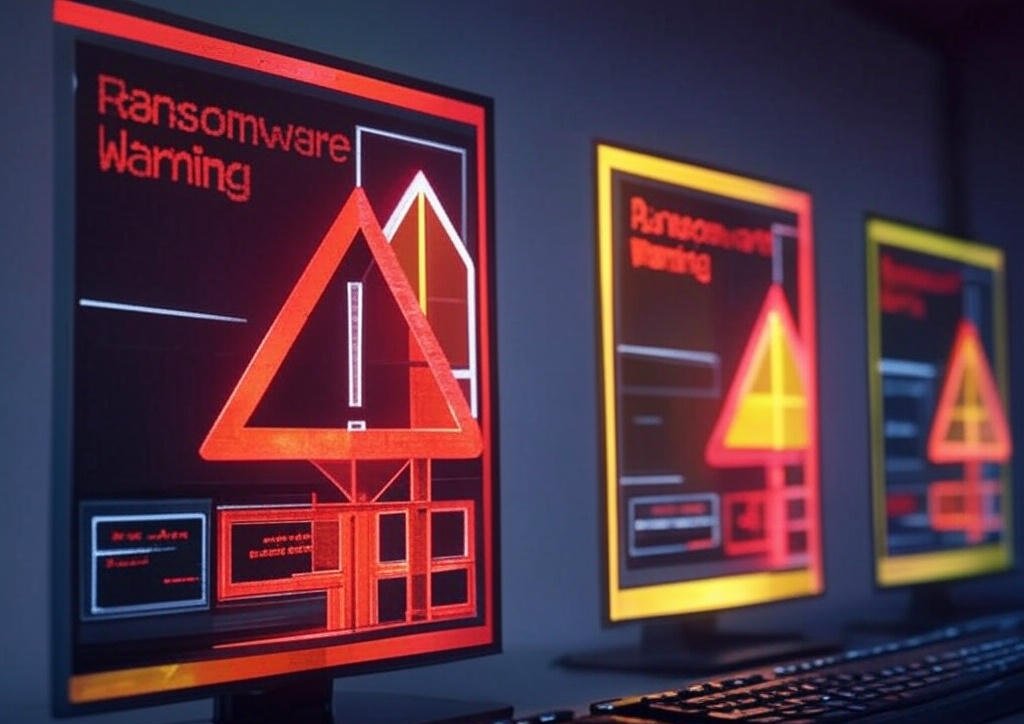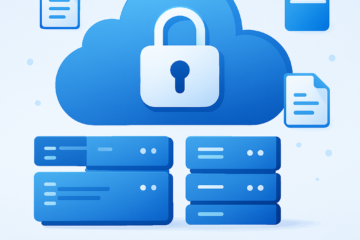What Is Ransomware? A Comprehensive Guide to Understanding, Preventing, and Recovering from Cyber Threats
In today’s digital age, cybersecurity threats are more prevalent than ever, and one of the most dangerous and disruptive among them is ransomware. But what exactly is ransomware? How does it work, and what can you do if you become a victim? This article dives deep into the world of ransomware, exploring its types, mechanisms, response strategies, and prevention techniques. By the end, you’ll have a clear understanding of this cyber threat and how to protect yourself or your business. For secure file management solutions that can help safeguard your data, platforms like filekub.com offer valuable tools worth exploring.

What Is Ransomware?
Ransomware is a type of malicious software (malware) designed to block access to a computer system, device, or data until a ransom is paid. Cybercriminals use ransomware to encrypt files or lock devices, rendering them inaccessible to the owner. Once the system is compromised, victims typically receive a message demanding payment—often in cryptocurrency like Bitcoin—to regain access.
The concept of ransomware isn’t new. It dates back to the late 1980s with the AIDS Trojan, one of the earliest known examples. However, modern ransomware has evolved into a sophisticated, multi-billion-dollar criminal industry. From individuals to large corporations and even government institutions, no one is immune to this growing threat.
Ransomware attacks can cause devastating consequences, including financial losses, data breaches, and operational downtime. Understanding its nature is the first step to defending against it. Let’s break it down further by exploring its types, how it operates, and what you can do to stay safe.
How Many Types of Ransomware Are There, and What Are They?
Ransomware comes in various forms, each with unique characteristics and methods of attack. While the core goal remains the same—extortion—different strains target victims in distinct ways. Below are the main types of ransomware you should know about:
1. Encrypting Ransomware
Encrypting ransomware is the most common and notorious type. It uses advanced encryption algorithms (like AES-256 or RSA) to lock files on a victim’s device. Once encrypted, the files become unreadable without a decryption key, which the attacker holds hostage until payment is made. Examples include:
- CryptoLocker: One of the first widely successful encrypting ransomware strains, emerging in 2013.
- WannaCry: A global outbreak in 2017 that exploited Windows vulnerabilities, affecting over 200,000 systems worldwide.
- Ryuk: A targeted ransomware often used against enterprises, known for demanding high ransoms.
2. Locker Ransomware
Unlike encrypting ransomware, locker ransomware doesn’t encrypt files. Instead, it locks users out of their devices entirely by restricting access to the operating system. Victims might see a fake message claiming to be from law enforcement, accusing them of illegal activity and demanding a “fine.” Examples include:
- WinLocker: A strain that locks Windows systems with a full-screen message.
- Reveton: Known for its “police ransomware” tactic.
3. Doxware (Leakware)
Doxware takes ransomware to a new level by threatening to leak sensitive data publicly if the ransom isn’t paid. After encrypting files, attackers steal copies of the data and use the threat of exposure as leverage. This type is especially damaging to businesses handling confidential information. Notable examples include:
- Maze: A pioneer in doxware, leaking stolen data on public websites.
- REvil (Sodinokibi): A versatile strain combining encryption and data theft.
4. Mobile Ransomware
With the rise of smartphone usage, mobile ransomware targets Android and iOS devices. It often masquerades as legitimate apps, locking the device or encrypting data once installed. Examples include:
- SimplLocker: An early Android ransomware that encrypted files on SD cards.
- FakeDefender: A mobile strain posing as antivirus software.
5. Double Extortion Ransomware
A hybrid of encrypting ransomware and doxware, double extortion ransomware encrypts files and simultaneously steals data, demanding payment to both decrypt files and prevent leaks. This type has surged in popularity among cybercriminals. Examples include:
- Conti: Known for targeting healthcare and critical infrastructure.
- DarkSide: Infamous for the Colonial Pipeline attack in 2021.
6. Ransomware-as-a-Service (RaaS)
RaaS isn’t a specific type of ransomware but a business model. Cybercriminals develop ransomware and sell or lease it to affiliates via dark web marketplaces. This lowers the barrier to entry for less-skilled attackers. Examples include:
- GandCrab: A widely distributed RaaS that infected millions before shutting down in 2019.
- LockBit: A modern RaaS with a “self-spreading” feature.
Each type of ransomware presents unique challenges, but they all share a common goal: exploiting victims for profit. Knowing these variations helps in identifying and mitigating threats effectively.
How Does Ransomware Work?
Understanding the mechanics of ransomware is crucial for recognizing how it infiltrates systems and what makes it so effective. Here’s a step-by-step breakdown of how ransomware typically operates:
Step 1: Delivery
Ransomware enters a system through various vectors, including:
- Phishing Emails: The most common method, where attackers send emails with malicious attachments or links.
- Exploiting Vulnerabilities: Targeting outdated software or unpatched systems (e.g., the EternalBlue exploit used by WannaCry).
- Malicious Downloads: Disguised as legitimate software, games, or files from untrusted websites.
- USB Drives: Infected removable media that autorun malware when plugged in.
Step 2: Installation
Once the user interacts with the malicious payload (e.g., opens an attachment or clicks a link), the ransomware installs itself silently. It may exploit system privileges to gain deeper access or disable security features like antivirus software.
Step 3: Encryption or Locking
Depending on the type, the ransomware either:
- Encrypts files using a public-private key pair, with the private key held by the attacker.
- Locks the device, displaying a ransom note on the screen.
Step 4: Ransom Demand
A message appears, informing the victim that their data or device is inaccessible. It typically includes:
- Payment instructions (often in cryptocurrency for anonymity).
- A deadline, with threats of data deletion or higher ransoms if unmet.
- In doxware cases, a sample of stolen data as proof.
Step 5: Payment and Decryption (or Not)
If the victim pays, the attacker may provide a decryption key or unlock code. However, there’s no guarantee—some victims pay and still lose their data. In double extortion cases, attackers may demand additional payments to prevent leaks.
Step 6: Persistence
Advanced ransomware may remain dormant or install backdoors, allowing attackers to return later. This persistence makes complete removal challenging without expert intervention.
The process is fast—encryption can complete in minutes—and relies on exploiting human error or system weaknesses. Tools like filekub.com can help by offering secure cloud storage to back up critical data, reducing the impact of such attacks.

What Should You Do If You’re Hit by Ransomware?
Discovering a ransomware infection can be panic-inducing, but rash decisions like paying the ransom immediately might worsen the situation. Here’s a structured approach to handling a ransomware attack:
1. Isolate the Infected Device
- Disconnect the affected device from the internet and other networks immediately to prevent the ransomware from spreading.
- If it’s part of a network (e.g., a business server), isolate it without powering it off to preserve evidence.
2. Assess the Damage
- Identify the ransomware strain by examining the ransom note or file extensions (e.g., .locked, .crypt).
- Check which files or systems are affected and whether backups exist.
3. Do Not Pay the Ransom (If Possible)
- Paying doesn’t guarantee decryption, and it funds further criminal activity. The FBI and cybersecurity experts advise against it.
- Instead, explore recovery options first.
4. Seek Decryption Tools
- Visit websites like No More Ransom (nomoreransom.org), a collaboration between law enforcement and cybersecurity firms offering free decryption tools for certain ransomware strains (e.g., older versions of CryptoLocker or GandCrab).
5. Restore from Backups
- If you have recent, uninfected backups, wipe the compromised system and restore your data. Services like filekub.com provide secure cloud backups that can be a lifesaver in these scenarios.
6. Report the Attack
- Notify local authorities or cybercrime units (e.g., the FBI’s Internet Crime Complaint Center at ic3.gov in the U.S.).
- Businesses should inform customers if sensitive data was stolen, per legal requirements like GDPR or CCPA.
7. Hire Cybersecurity Experts
- For complex attacks (e.g., double extortion), professionals can remove the ransomware, recover data, and investigate the breach’s source.
8. Learn and Recover
- After resolving the issue, analyze how the attack occurred and strengthen defenses to prevent recurrence.
Acting quickly and methodically increases your chances of minimizing damage without rewarding cybercriminals.
How to Prevent Ransomware Attacks
Prevention is always better than cure, especially with ransomware. Implementing robust security measures can significantly reduce your risk. Here are actionable steps to protect yourself or your organization:
1. Keep Software Updated
- Regularly patch operating systems, applications, and firmware to close vulnerabilities exploited by ransomware (e.g., WannaCry targeted unpatched Windows systems).
2. Use Strong Antivirus and Anti-Malware Tools
- Deploy reputable security software with real-time protection to detect and block ransomware before it activates.
3. Back Up Data Regularly
- Maintain offline or cloud-based backups of critical files. Platforms like filekub.com offer encrypted storage options, ensuring your backups remain safe from ransomware.
4. Beware of Phishing
- Train yourself and employees to recognize phishing emails—avoid clicking suspicious links or downloading unverified attachments.
5. Enable a Firewall and Network Security
- Use firewalls to block unauthorized access and segment networks to limit ransomware spread in businesses.
6. Restrict User Permissions
- Limit administrative privileges on devices to prevent ransomware from gaining system-wide control.
7. Use Multi-Factor Authentication (MFA)
- Add an extra layer of security to accounts and systems, making it harder for attackers to exploit stolen credentials.
8. Educate Yourself and Your Team
- Conduct regular cybersecurity training to stay informed about evolving threats and best practices.
By combining these strategies, you create a multi-layered defense that’s tough for ransomware to penetrate.
Summary of Ransomware: Key Takeaways
Ransomware is a pervasive cyber threat that encrypts files, locks devices, or steals data to extort victims for payment. It comes in various forms—encrypting, locker, doxware, mobile, double extortion, and RaaS—each with distinct tactics but a shared goal of exploitation. Its operation involves delivery through phishing or exploits, silent installation, encryption or locking, and a ransom demand, often with no guarantee of recovery even after payment.
If infected, isolate the device, avoid paying if possible, seek decryption tools, restore from backups (like those offered by filekub.com), and report the incident. Prevention hinges on updating software, using antivirus tools, backing up data, and staying vigilant against phishing.
In a world where ransomware attacks are rising—costing billions annually—proactive measures and awareness are your best defenses. Secure file management platforms like filekub.com can play a vital role in safeguarding your data, offering peace of mind in an unpredictable digital landscape.


